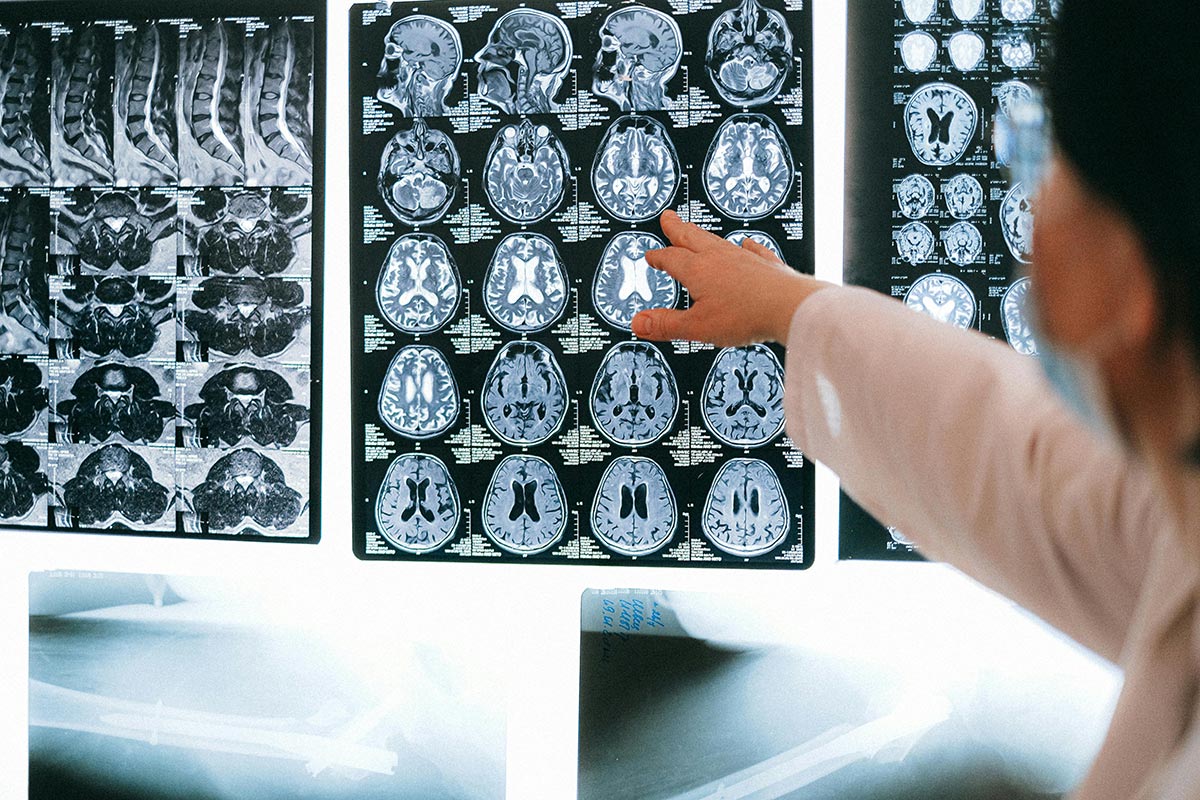

Community Integration Programs
Community integration programs play a crucial role in empowering individuals on the path to healing and fostering inclusivity within society. These programs are designed to ensure that individuals with disabilities have access to social, educational, and professional opportunities within their existing communities. By promoting autonomy, social connections, and equal access, community integration programs contribute to the overall well-being of individuals and the community as a whole.
Definition and Importance
According to Foothold Technology, community integration refers to the process of enabling individuals with disabilities to fully participate in community life, rather than being segregated or excluded. Nearly one in four people in the United States, and more than one billion people worldwide, are living with a disability. Community integration programs are essential for promoting autonomy in decision-making, increasing social connections and opportunities, and collectively sharing the wisdom, knowledge, ideas, talents, and creativity of all individuals.
The importance of community integration is underscored by legal mandates and guidelines. In 1999, the Supreme Court of the United States held that unjustified segregation of people with disabilities constitutes discrimination in violation of Title II of the Americans with Disabilities Act. This ruling, known as the Olmstead decision, emphasized that government institutions must offer community-integrated services [1]. The Olmstead decision ensures equal access to community integration programs, activities, and supports for individuals with disabilities, enabling them to fully participate in society.
Legal Mandates and Benefits
The U.S. Supreme Court's Olmstead decision reaffirms the principle that the unjustified segregation of people with disabilities is a form of discrimination prohibited by the Americans with Disabilities Act. This legal mandate ensures that individuals with disabilities have the right to access community integration programs and activities, allowing them to participate on an equal level with nondisabled individuals [2].
Community integration programs provide numerous benefits for individuals with disabilities and society as a whole. Some of the key benefits include:
- Autonomy and Self-Determination: Community integration programs empower individuals with disabilities to make decisions about their own lives, promoting self-determination and independence.
- Social Inclusion: By facilitating social connections and interactions, community integration programs help combat isolation and loneliness, fostering a sense of belonging and acceptance.
- Equal Opportunities: Through community integration, individuals with disabilities have access to educational, vocational, and recreational opportunities, ensuring equal access to resources and services.
- Shared Contributions: Community integration allows individuals with disabilities to share their unique talents, skills, and perspectives with the broader community, enriching society as a whole.
By embracing community integration programs, we can create a society that values diversity, inclusivity, and equal opportunities for all individuals, regardless of their abilities.
State Programs for Community Integration

Several states in the United States have implemented programs to promote community integration and empower individuals with disabilities to lead fulfilling lives. Let's explore some of the programs available in California, Texas, and Wisconsin.
California
California has a range of programs in place to support residents with disabilities in gaining more control over their healthcare, employment, community participation, and daily lives. These programs aim to promote independence and autonomy among individuals. The state emphasizes the importance of diversity and cultural competence in supporting individuals and their families [1]. By involving people with disabilities in planning programs, choosing activities, and advocating for changes that impact their lives, California promotes empowerment and ensures effective opportunities for full participation in their communities [3].
Texas
In Texas, community integration programs focus on providing individuals with disabilities the necessary support to actively participate in community life. These programs aim to enhance independence, self-determination, and social inclusion. Texas emphasizes the importance of person-centered care and tailoring services to meet individual needs. By offering various support services, Texas enables individuals to live meaningful and inclusive lives within their communities.
Wisconsin
Wisconsin is dedicated to promoting community integration for individuals with disabilities. The state offers programs and services that empower individuals to live independently and actively engage in their communities. Wisconsin recognizes the importance of flexibility in providing person-centered care and supports that align with an individual's unique needs and preferences. By fostering respect and dignity, Wisconsin aims to create an inclusive society where individuals with disabilities can thrive.
These state programs for community integration are just a few examples of the efforts being made across the country to empower individuals and promote inclusivity. By providing a range of services and support, these programs help individuals with disabilities lead fulfilling lives within their communities. To learn more about other aftercare programs and support services in addiction recovery, visit our article on aftercare programs in addiction medical hospitals.
Barriers to Community Integration

In the pursuit of community integration, individuals may encounter various challenges that hinder their full participation in community activities. Recognizing and understanding these common barriers is essential in order to develop effective strategies to overcome them.
Common Challenges
- Transportation: Lack of reliable and accessible transportation can be a significant hurdle for individuals seeking community integration. Limited transportation options may restrict their ability to access employment, education, healthcare, and social activities.
- Family Resistance: Some individuals face resistance or lack of support from their families when attempting to engage in community activities. Family members may have concerns about their loved one's safety, fear of stigma, or lack of understanding about the benefits of community integration.
- Financial Constraints: Limited funding and resources can impede community integration efforts. Financial challenges may prevent individuals from accessing necessary support services or participating in activities that require additional fees.
- Lack of Educational Support and Transition Services: Individuals transitioning from institutional settings or completing treatment programs may struggle to find adequate educational support and transition services. This can hinder their ability to secure employment, pursue further education, or develop necessary skills for independent living.
- Feelings of Devaluation and Marginalization: Individuals with disabilities or those recovering from addiction may experience feelings of devaluation and marginalization within their communities. This can stem from societal attitudes, discrimination, or a lack of inclusive opportunities, leading to social isolation and a decreased sense of belonging.
Strategies for Overcoming Barriers
- Transportation Solutions: Collaborate with local transportation services to improve accessibility and availability of transportation options for individuals. Explore partnerships with rideshare programs, public transportation, or community organizations to provide reliable transportation alternatives.
- Education and Awareness Programs: Develop education and awareness programs to address misconceptions and stigma surrounding community integration. These programs can target families, community members, and service providers to promote understanding and support.
- Collaborative Funding Efforts: Seek funding opportunities and collaborate with community organizations, government agencies, and non-profit entities to secure resources for individuals pursuing community integration. Pooling resources and leveraging partnerships can help overcome financial constraints.
- Enhanced Transition Services: Establish comprehensive transition programs that provide individuals with the necessary support to navigate the transition from institutional settings to community living. This can include educational support, vocational training, and connections to community resources.
- Promote Inclusion and Empowerment: Foster a community environment that embraces diversity and promotes the inclusion of individuals with disabilities or in recovery. Empower individuals by involving them in decision-making processes, advocacy efforts, and community activities that enhance their sense of worth and belonging.
By addressing these common challenges and implementing strategies tailored to individual needs, community integration can be promoted, enabling individuals to fully participate in society and on their path to healing. To learn more about community integration programs and other aspects of addiction recovery, visit our article on aftercare programs in addiction medical hospitals.
Principles of Community Integration
When it comes to community integration programs, several key principles guide their implementation and success. These principles include respect and dignity, flexibility, and empowerment. Let's explore each of these principles in more detail.
Respect and Dignity
Respect and dignity are considered inherent rights of individuals with disabilities. It is essential to recognize and honor their autonomy, choices, and preferences. According to the guiding principle of respect and dignity, individuals with disabilities should be the final decision-makers regarding their supports and services [3].
In the context of community integration programs, respect and dignity mean treating individuals with disabilities as valued members of society. It involves fostering an inclusive environment that upholds their rights, promotes equal opportunities, and eliminates discrimination. By honoring their individuality and providing support tailored to their specific needs, community integration programs can create a sense of belonging and enhance overall well-being.
Flexibility
Flexibility is an essential principle in community integration programs. It recognizes that lives change over time, and services and supports for individuals with disabilities should adapt accordingly. Flexibility allows for adjustments and modifications to accommodate evolving needs and circumstances.
In the context of community integration, flexibility means providing a range of options and opportunities for individuals with disabilities. It involves offering various activities, programs, and services that cater to diverse interests and preferences. By being flexible, community integration programs can better meet the unique needs of individuals and ensure their active participation in social, recreational, and educational activities.
Empowerment
Empowerment is a vital guiding principle in community integration programs. It emphasizes the importance of involving individuals with disabilities in decision-making processes, enabling them to advocate for themselves, and promoting self-determination. People with disabilities are encouraged to be involved in planning programs, choosing activities, and advocating for changes that impact their lives.
In the context of community integration, empowerment means fostering a sense of independence and self-confidence among individuals with disabilities. It involves providing them with the necessary tools, resources, and support to overcome challenges and actively participate in community life. By empowering individuals, community integration programs promote personal growth, enhance self-esteem, and enable individuals to live meaningful and fulfilling lives.
By upholding the principles of respect and dignity, flexibility, and empowerment, community integration programs can effectively support individuals with disabilities on their path to healing. These principles create a foundation for inclusive and person-centered care, ensuring that individuals are valued, supported, and empowered to become active members of their communities. For more information on community integration and other related topics, visit our articles on aftercare programs in addiction medical hospitals, education and awareness programs in addiction hospitals, the role of family education programs in addiction medical hospitals, the importance of peer mentorship programs, and how addiction hospitals use fitness programs in recovery.
Home and Community-Based Services (HCBS)
In the realm of community integration programs, Home and Community-Based Services (HCBS) play a vital role in providing person-centered care to individuals with functional limitations who require assistance with daily activities. HCBS programs aim to enable individuals to stay in their homes rather than moving to a care facility, benefiting both the community and the individuals served [4].
Types of Services
HCBS programs generally fall into two categories: health services that meet medical needs and human services that support daily living. These programs often offer a combination of both types of services, tailored to the specific needs of the individual. Health services may include:
- Skilled nursing care
- Medication management
- Therapies (e.g., physical, occupational, or speech therapy)
- Chronic disease management
- Behavioral health services
On the other hand, human services focus on supporting individuals with activities of daily living and enhancing their overall well-being. These services may include:
- Personal care assistance (e.g., bathing, grooming, and dressing)
- Meal preparation and nutrition support
- Transportation assistance
- Homemaker services (e.g., light housekeeping, laundry)
- Social and recreational activities
The specific types of services provided may vary depending on the state and the needs of the individual.
Funding and Implementation
HCBS programs are often funded through state waivers, which are part of a state's Medicaid program and provide special services to specific populations. Other funding sources for HCBS may include tribes or private long-term care insurance held by patients [4].
Within individual states, HCBS care is typically provided by lead agencies and other service providers. Lead agencies act as primary care coordinators, ensuring that individuals receive the services they need and facilitating access to resources. Tribes can also apply with their state to become lead agencies based on state eligibility requirements. The lead agencies collaborate with various healthcare professionals and organizations to implement and deliver HCBS programs effectively [4].
HCBS programs have become an essential component of community integration, allowing individuals to receive the care and support they need while remaining in the comfort of their own homes. By providing a range of health and human services, these programs empower individuals to maintain their independence and enhance their overall quality of life.
Enhancing Community Integration
To promote the successful integration of individuals into their communities, two essential components play a vital role: person-centered care and the support services available to them.
Person-Centered Care
Person-centered care is a fundamental approach that prioritizes the unique needs, preferences, and aspirations of individuals. This approach recognizes that each person has their own journey and tailors support and services accordingly. By focusing on the individual, person-centered care empowers them to overcome challenges and establish a sense of belonging within the community.
One organization that exemplifies the person-centered care approach is Residential Support Services. They provide a range of day programs that encourage socialization, skill-building, and personal development for individuals with developmental disabilities, facilitating community integration [5]. By recognizing the diverse needs of individuals, person-centered care ensures that the support they receive is tailored to their specific circumstances, fostering a sense of independence and self-fulfillment.
Accessible transportation is another crucial aspect of person-centered care that significantly enhances community integration. Residential Support Services, for example, offers transportation options within a 20-mile radius of Billings, MT, providing individuals with developmental disabilities the means to access various community resources and engage in social activities. By facilitating transportation, individuals are empowered to participate fully in community life, fostering a sense of independence and connectedness.
Role of Support Services
Support services play a vital role in enhancing community integration by providing the necessary resources and guidance to individuals. These services collaborate with local businesses, organizations, and community members to create inclusive environments that cater to the unique needs of individuals.
Residential Support Services actively engages with the Billings, MT community to foster community integration for individuals with developmental disabilities. By collaborating with local businesses and organizations, they work towards creating inclusive environments that provide opportunities for individuals to participate in community life [5]. This collaboration fosters a sense of belonging and acceptance, enabling individuals to engage in various social, recreational, and vocational activities.
Support services also provide education and awareness programs to the community, promoting understanding and acceptance of individuals with diverse needs. By raising awareness, these programs help break down barriers and create a more inclusive society that supports community integration for all.
In conclusion, enhancing community integration involves implementing person-centered care and providing comprehensive support services. Person-centered care ensures that individuals receive tailored support that considers their unique needs, preferences, and aspirations. Additionally, support services collaborate with the community to create inclusive environments and offer education and awareness programs. By combining person-centered care with robust support services, individuals can thrive and establish meaningful connections within their communities.
References
[1]: https://footholdtechnology.com/news/community-integration/
[2]: https://udservices.org/blog/community-integration-people-with-disabilities/
[3]: https://odr.dc.gov/book/olmstead/Principles
[4]: https://www.cms.gov/training-education/partner-outreach-resources/american-indian-alaska-native/ltss-ta-center/information/ltss-models/home-and-community-based-services
[5]: https://www.rssmt.org/enhancing-community-integration-for-individuals-with-developmental-disabilities/
.svg)





